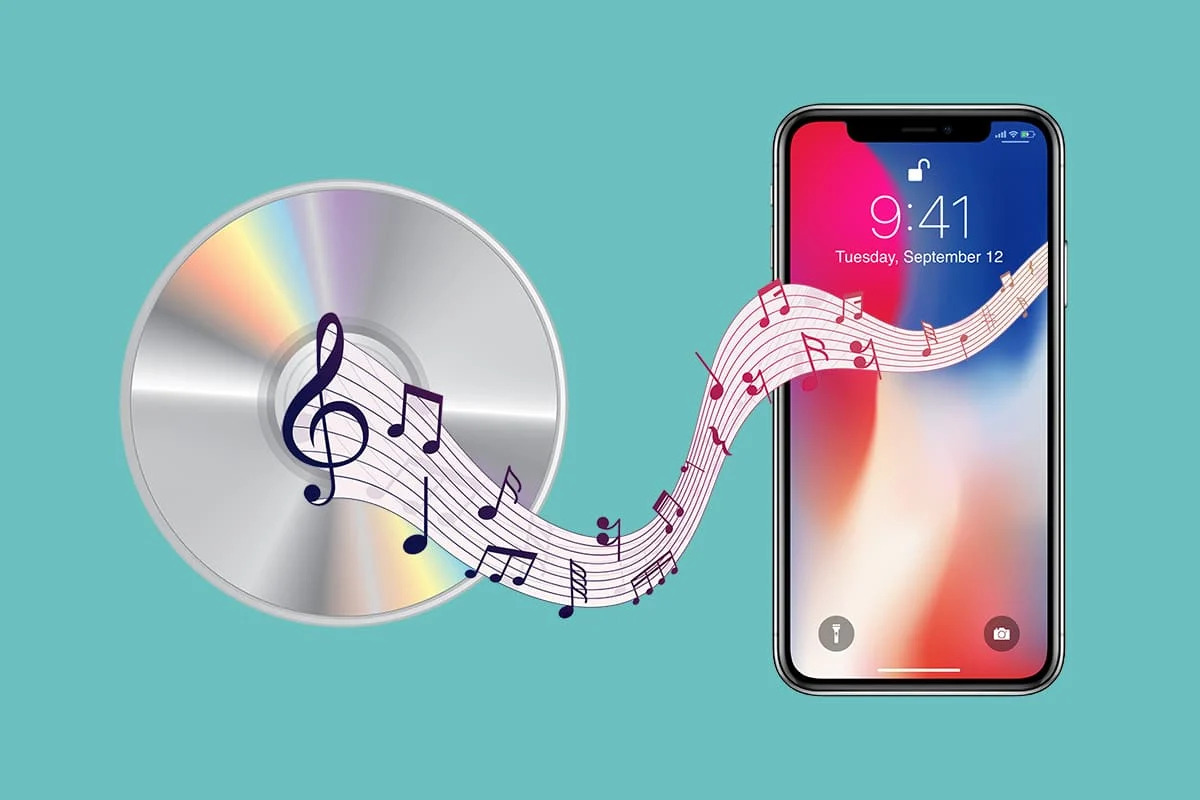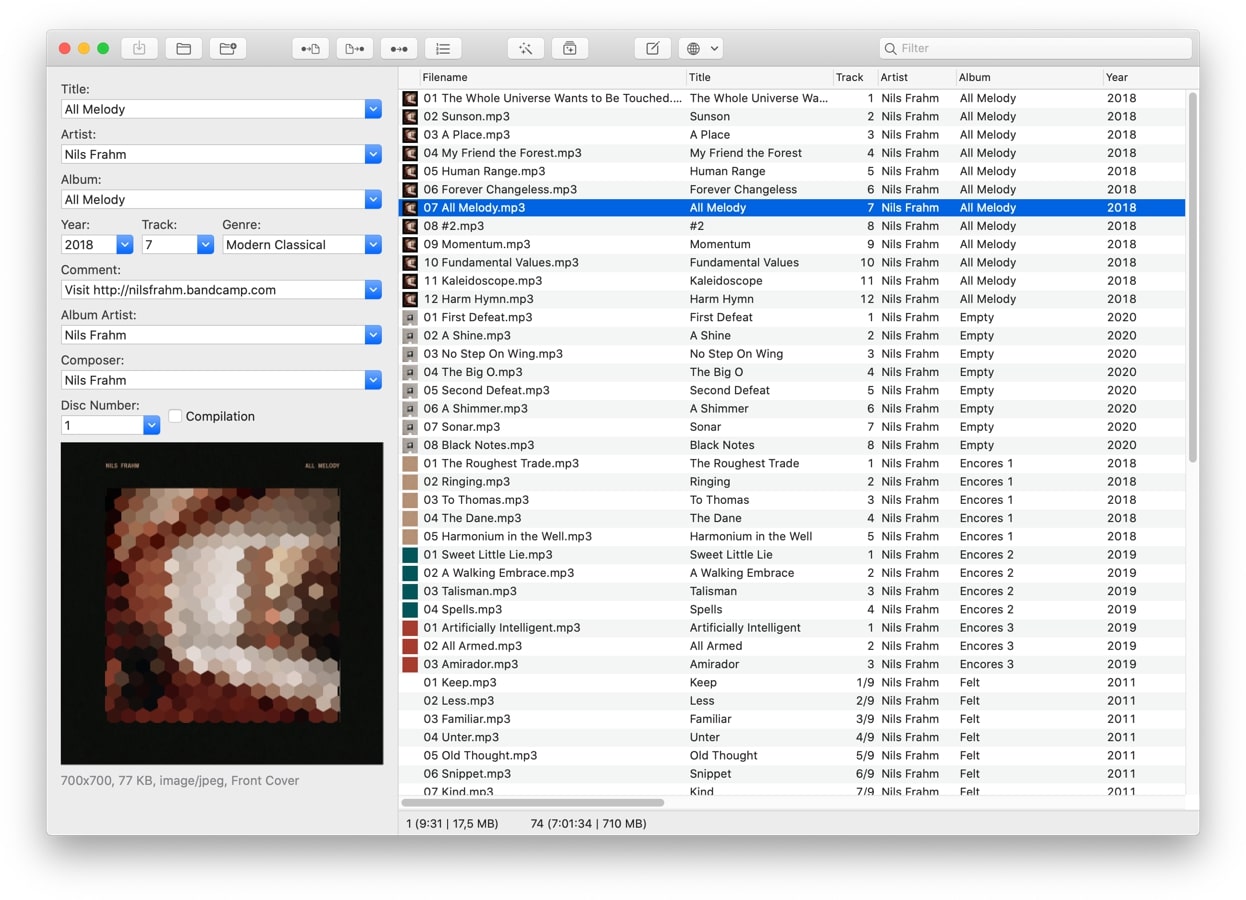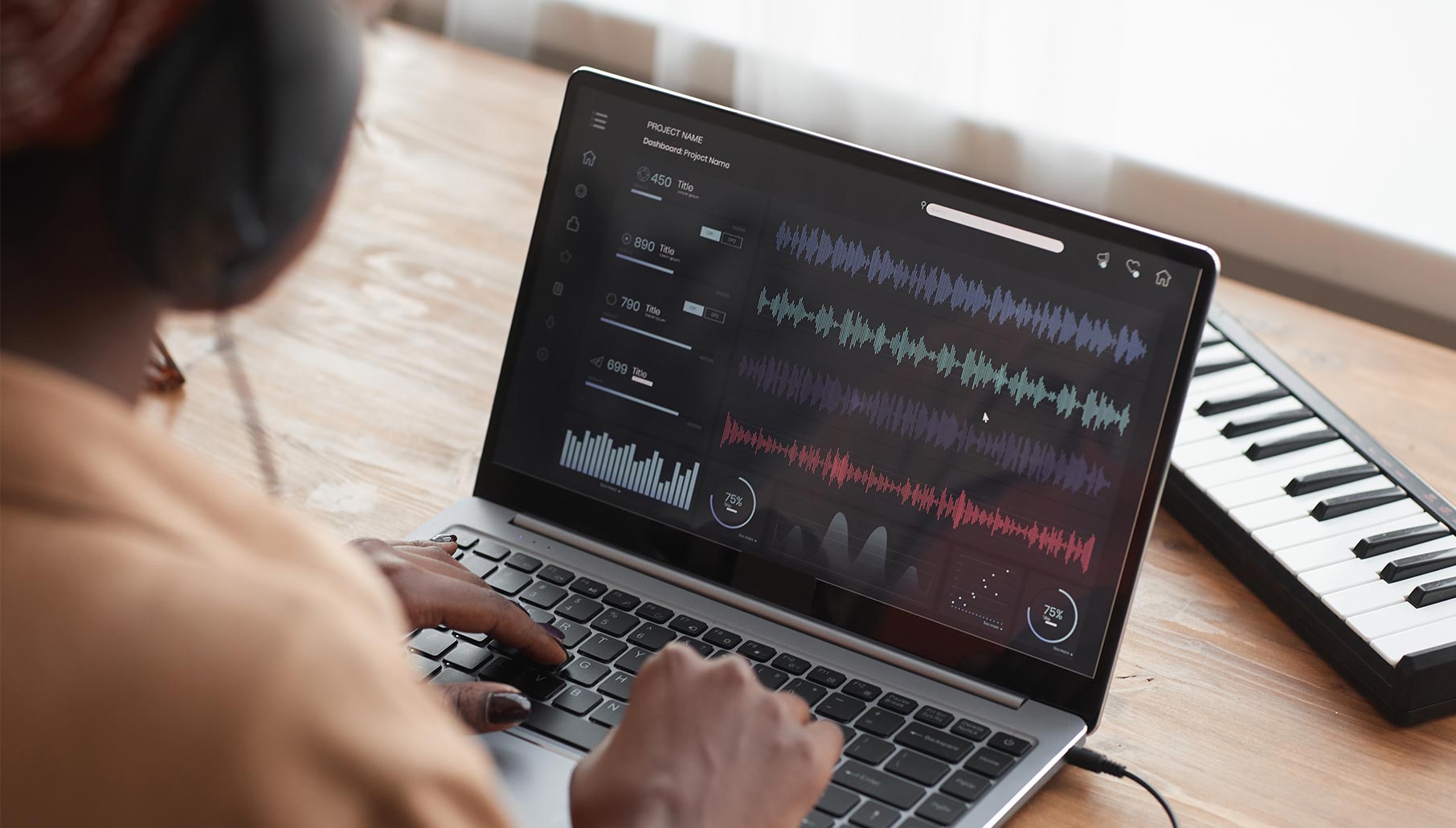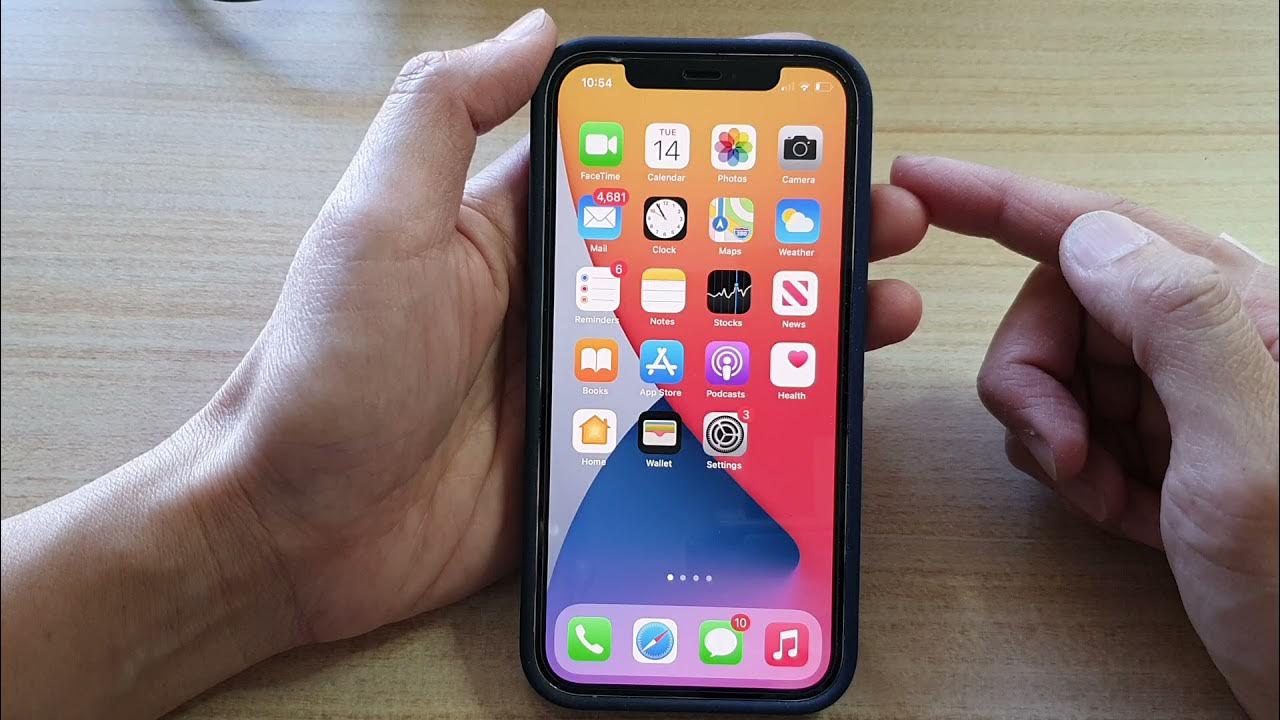Home>Production & Technology>MP3>What Is An MP3 File


MP3
What Is An MP3 File
Modified: March 8, 2024
Discover what an MP3 file is and how it revolutionized the way we listen to music. Learn about its compact size and high-quality audio format.
(Many of the links in this article redirect to a specific reviewed product. Your purchase of these products through affiliate links helps to generate commission for AudioLover.com, at no extra cost. Learn more)
Table of Contents
Introduction
Welcome to the world of MP3 files! If you’re unfamiliar with the term, or just curious to learn more, you’ve come to the right place. MP3 files have revolutionized the way we listen to and share music, and have become a ubiquitous part of our digital lives. In this article, we will explore what exactly an MP3 file is, its history, how it works, its advantages and disadvantages, common uses, and what the future holds for this technology.
But first, let’s start with a brief definition. MP3 stands for MPEG-1 Audio Layer 3, referring to a compressed audio file format that allows for high-quality audio playback in a relatively small file size. The MP3 format has become incredibly popular since its creation in the early 1990s, and with the rise of digital music platforms and portable devices, it has become the standard for sharing and listening to music online.
Now that we have an overview, let’s dive deeper into the fascinating world of MP3 files. From their humble beginnings to their profound impact on the music industry, get ready to discover why MP3 files are here to stay.
Definition of an MP3 File
At its core, an MP3 file is a type of digital audio file that uses the MP3 (MPEG-1 Audio Layer 3) compression format to reduce the file size while preserving high-quality sound. The MP3 format achieves this compression by removing imperceptible audio data, resulting in a smaller file size compared to other audio file formats like WAV or FLAC.
MP3 files are widely supported by a range of devices and software platforms, making them extremely versatile and accessible. They can be played on computers, smartphones, portable music players, and even in some car audio systems. The popularity of MP3 files can be attributed to their convenience and ease of use, as they can be easily shared, downloaded, and streamed through various online platforms.
The compression process used in MP3 files is based on psychoacoustic models, which take advantage of the human auditory system’s limitations. These models identify and remove sounds that are less likely to be noticed by the listener, such as background noise or frequencies outside the range of human hearing.
While MP3 files offer a convenient way to store and listen to music, it’s important to note that the compression process does result in a loss of audio quality. However, the degree of quality loss is typically acceptable to most listeners, especially when considering the benefits of smaller file sizes and increased portability.
In summary, an MP3 file is a compressed audio file that uses the MP3 format. It offers a balance between file size and audio quality, making it a popular choice for distributing and enjoying music in the digital age.
History of MP3 Format
The history of the MP3 format dates back to the early 1980s when the need to compress audio files arose due to limited storage and slow transmission speeds. The concept of perceptual audio coding, which ultimately led to the development of the MP3 format, was pioneered by Karlheinz Brandenburg and his team at the Fraunhofer Institute in Germany.
In 1993, the first version of the MP3 format, known as “MPEG-1 Audio Layer 3,” was released. It quickly gained popularity as it allowed users to store and transmit audio files in a fraction of the space required by other formats, without significantly sacrificing audio quality.
The breakthrough came from the psychoacoustic model used in the compression process, which allowed for the removal of imperceptible audio data. This resulted in smaller file sizes while maintaining reasonable audio quality. The MP3 format’s efficiency and ability to provide near-CD quality sound made it a game-changer in the digital music industry.
By the mid-1990s, with the rise of the internet, the MP3 format became synonymous with online music sharing. Websites like Napster and LimeWire allowed users to share MP3 files electronically, leading to a boom in music piracy and copyright infringement concerns. However, this also paved the way for digital music distribution and the rise of legal online music platforms.
In the early 2000s, portable MP3 players such as the iconic iPod hit the market, further fueling the popularity and adoption of the MP3 format. Users could now carry thousands of songs in their pocket and enjoy music on the go. The music industry had to adapt to this new digital landscape, leading to the rise of digital music stores and streaming services.
Over the years, the MP3 format has continued to evolve, with subsequent versions offering improvements in audio compression and sound quality. However, despite advancements such as AAC (Advanced Audio Coding), the MP3 format remains widely used due to its compatibility and familiarity among users and devices.
Today, the history of the MP3 format is closely intertwined with the digital music revolution. It has reshaped the way we consume and share music, democratizing the industry and providing endless possibilities for artists and listeners alike.
How Does an MP3 File Work?
An MP3 file works by utilizing a specific compression algorithm to reduce the size of an audio file while maintaining reasonable audio quality. The compression process involves removing audio data that is considered imperceptible to the human ear.
When a song or audio is encoded into an MP3 file, it goes through several stages. First, the audio is broken down into small segments, usually referred to as frames. Each frame contains a fraction of a second of audio data.
Next, the MP3 compression algorithm employs a combination of perceptual noise shaping, quantization, and psychoacoustic models to analyze the audio data within each frame. The psychoacoustic models consider the human auditory system’s limitations and remove audio components that are less likely to be noticed by the listener.
During quantization, the audio data is truncated, reducing the precision of the signal. This loss of precision contributes to reducing the file size. The psychoacoustic models help determine which audio data can be removed without significantly affecting the perceived audio quality.
Once the compression process is complete, the MP3 file consists of the encoded frames, each containing the compressed audio data. Additionally, an MP3 file may also include metadata such as the song title, artist name, and album information.
When the MP3 file is played, a device or software player decodes the frames and reconstructs the audio signal. The decoder reverses the compression process and reproduces the audio data, allowing the listener to hear the sound as intended.
It’s important to note that although MP3 files provide a good balance between file size and audio quality, there is a trade-off. Some audio data is discarded during the compression process, resulting in a slight loss of fidelity compared to the original uncompressed audio. However, the degree of quality loss is generally considered acceptable to the majority of listeners.
With advances in technology, newer codecs such as AAC (Advanced Audio Coding) have emerged, offering improved compression efficiency and better audio quality compared to MP3. However, due to the widespread compatibility and familiarity of the format, MP3 files continue to be widely used and supported by various devices and platforms.
Advantages of Using MP3 Files
MP3 files offer numerous advantages that have contributed to their widespread adoption and popularity in the digital music industry. Here are some of the key advantages:
- Small File Size: One of the primary advantages of MP3 files is their small size compared to other audio formats. The compression algorithm used in MP3 files significantly reduces the file size without compromising the overall audio quality. This makes it easier to store and transfer large collections of music, whether on a computer, smartphone, or portable music player.
- Wide Compatibility: MP3 files are compatible with a wide array of devices and software applications. From computers to smartphones, to car audio systems, the vast majority of audio playback devices and software support the MP3 format. This means you can easily play your favorite MP3 files on various devices without the need for conversion or additional software.
- Easy Accessibility: MP3 files have revolutionized the way we access and listen to music. With the rise of digital music platforms and online stores, finding and acquiring MP3 files has become incredibly convenient. It’s now possible to download or stream MP3 files instantly, providing immediate access to a vast library of music from around the world.
- Portability: MP3 files have made music truly portable. With the advent of portable MP3 players and smartphones, you can carry thousands of songs in your pocket. This allows you to enjoy your favorite music on the go, whether during a workout, commuting, or traveling.
- Internet-Friendly: MP3 files were integral in the early days of online music sharing and are still widely used for this purpose. They can be easily uploaded, downloaded, and shared over the internet, making it simple to exchange music with friends or discover new artists and tracks.
Overall, the advantages of MP3 files, such as their small file size, wide compatibility, easy accessibility, portability, and internet-friendly nature, have made them the go-to format for digital music. They have revolutionized how we consume and share music, providing a convenient and enjoyable listening experience for millions of people worldwide.
Disadvantages of Using MP3 Files
While MP3 files offer numerous advantages, there are also some drawbacks to consider. Here are some of the disadvantages of using MP3 files:
- Audio Quality Loss: The compression process used in MP3 files involves removing certain audio data that is considered imperceptible to the human ear. As a result, there is a slight loss of audio quality compared to the original uncompressed audio. While the degree of quality loss is generally acceptable to most listeners, audiophiles and music purists may prefer other formats that preserve audio fidelity.
- Restricted Dynamic Range: MP3’s compression algorithm can limit the dynamic range of audio, which refers to the difference between the softest and loudest parts of a sound recording. This can result in a loss of nuance and detail, particularly in music with a wide dynamic range, such as orchestral compositions.
- Compatibility Issues with Lossless Formats: While the MP3 format is widely supported, it may encounter compatibility issues when working with lossless audio formats such as WAV or FLAC. These lossless formats offer higher audio fidelity but come with larger file sizes. If you’re working with high-quality audio for professional purposes or prefer lossless audio formats, you may encounter limitations when using MP3 files.
- Legal and Ethical Concerns: MP3 files played a significant role in the early days of music piracy due to their ease of sharing and downloading. While legal streaming platforms and online stores have emerged, piracy and copyright infringement remain concerns associated with MP3 files. It’s essential to respect copyright laws and use MP3 files responsibly.
- Limitations for Audiophiles: For audiophiles and music enthusiasts who prioritize the highest possible audio quality, MP3 files may not meet their exacting standards. Other formats, such as FLAC or DSD, offer lossless compression and superior audio fidelity but come with larger file sizes and may require specialized hardware or software for playback.
It’s worth noting that while these disadvantages exist, many users find MP3 files to be a convenient and satisfactory choice for enjoying music. The benefits of small file sizes, wide compatibility, and easy accessibility often outweigh the potential drawbacks, making MP3 files a popular and practical choice for everyday use.
Common Uses of MP3 Files
MP3 files have become a ubiquitous format for storing, sharing, and enjoying digital audio. Here are some of the most common uses of MP3 files:
- Online Music Streaming Services: Many online music streaming platforms, such as Spotify, Apple Music, and Amazon Music, utilize the MP3 format for delivering music to their users. MP3 files allow for efficient streaming, ensuring smooth playback even with limited internet bandwidth.
- Portable Music Players: MP3 files have revolutionized portable music players. Devices like iPods, smartphones, and dedicated MP3 players allow users to store and carry thousands of songs in their pocket. This enables people to listen to their favorite music while on the go, whether commuting, exercising, or traveling.
- Digital Music Collections: MP3 files provide a convenient way to organize and store personal music collections on computers and external storage devices. Users can create playlists, categorize their music, and easily browse through their favorite songs in digital music libraries.
- Podcasts and Audiobooks: MP3 files are commonly used for distributing and consuming podcasts and audiobooks. The small file size of MP3s makes it easy to download or stream these audio programs, allowing listeners to enjoy a wide range of podcasts and audiobooks on various devices.
- Ringtone and Notification Sounds: MP3 files are commonly used to customize and personalize the sound of mobile phones. Users can choose their favorite songs or sound clips and convert them into MP3 files to set as their ringtone or notification sound.
- Music Production and Editing: MP3 files are often used in music production and editing software. They are used for importing and exporting audio tracks, creating remixes, and editing sound effects. MP3 files make it easy for music producers and editors to work with audio material and collaborate with others in the industry.
These are just a few examples of the widespread applications of MP3 files. Their flexibility, small file size, and wide compatibility have made them a popular choice for various audio-related endeavors and have significantly shaped the way we consume and interact with digital music.
The Future of MP3 Files
The MP3 format has played a significant role in the digital music revolution and continues to be widely used today. However, with advancements in technology and the emergence of new audio formats, the future of MP3 files may undergo some changes. Here are a few possibilities for the future of MP3 files:
- Shift to Higher-Quality Formats: As technology advances, there is a growing demand for higher audio quality. While MP3 files have been satisfactory for many listeners, audiophiles and music enthusiasts may gravitate towards formats with higher fidelity, such as FLAC or DSD. These formats offer lossless compression and stunning audio quality, making them an appealing choice for those seeking the utmost audio fidelity.
- Improved Compression Algorithms: Future developments may bring advancements in compression algorithms, allowing for even more efficient compression of audio data. This could result in new formats that offer higher audio quality at smaller file sizes, striking a better balance between compression and audio fidelity.
- Adoption of Newer Audio Codecs: The emergence of new audio codecs, such as AAC, Opus, and others, may lead to a gradual shift away from the dominance of MP3 files. These codecs offer improved audio quality and more efficient compression methods compared to MP3. As technology continues to evolve, these formats may become more widely adopted in the industry.
- Integration with Streaming and Cloud Services: With the rise of streaming and cloud-based music services, the future of MP3 files may involve closer integration with these platforms. Streaming services already heavily rely on MP3 for their delivery, but as technology evolves, there may be advancements in streaming quality and the way audio files are stored and accessed in the cloud.
- Continued Adaptation and Evolution: The resiliency of MP3 files lies in their flexibility and widespread support. Even as new audio formats emerge, MP3 files are likely to remain compatible with various devices and software applications. The format may continue to adapt and evolve to suit changing audio consumption trends, while ensuring backward compatibility for legacy devices and systems.
While the future of MP3 files may bring changes and advancements, their legacy as a revolutionary audio format is firmly established. MP3 files have transformed the way we listen to and share music, and they will continue to be an integral part of the digital music landscape for years to come.
Conclusion
The MP3 format has undoubtedly left an indelible mark on the way we consume and share music. From its humble beginnings as a solution for audio compression to its widespread popularity today, MP3 files have revolutionized the digital music industry.
With their small file sizes, wide compatibility, and easy accessibility, MP3 files have empowered music lovers to carry thousands of songs in their pockets, stream music online, and create personalized music collections. They have reshaped the music industry, enabling independent artists to reach a global audience and ushering in a new era of music distribution.
While MP3 files have their limitations in terms of audio quality and compatibility with lossless formats, they remain a practical and convenient solution for average listeners. The trade-off between file size and audio quality has been acceptable for the majority of music enthusiasts, allowing for seamless enjoyment of their favorite tracks on different devices.
The future of MP3 files may see advancements in compression algorithms, the adoption of newer audio codecs, and closer integration with streaming and cloud-based music services. However, the widespread compatibility and familiarity of MP3 files suggest that they will remain relevant in the years to come, even as new audio formats emerge.
In conclusion, MP3 files have transformed the way we experience music, providing us with the ability to carry our entire music libraries in our pockets and access a vast array of songs at our fingertips. As technology continues to evolve, the legacy of MP3 files as an innovative and game-changing audio format will continue to shape the music industry and our digital music experiences.











